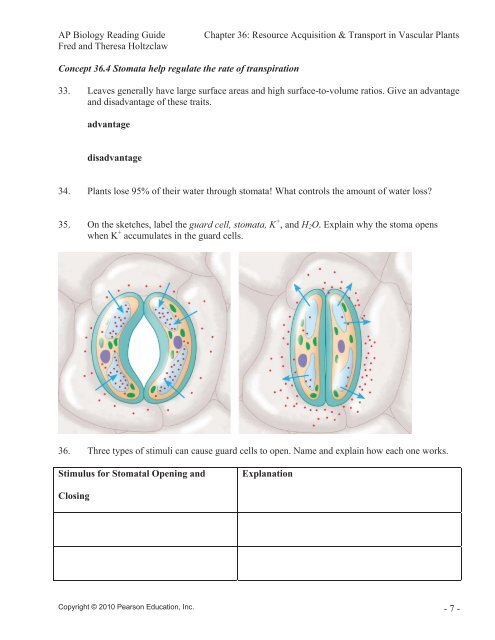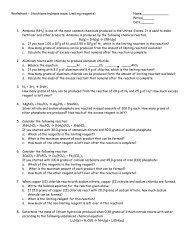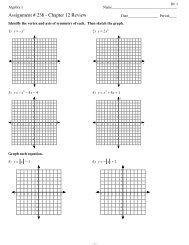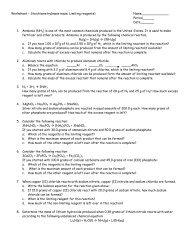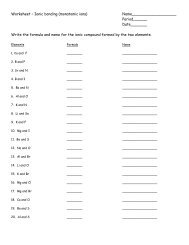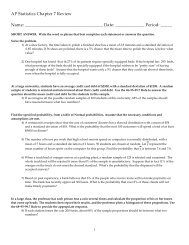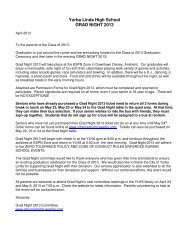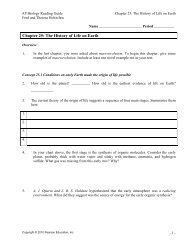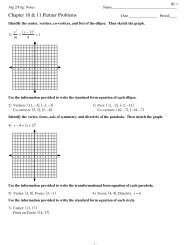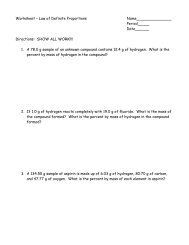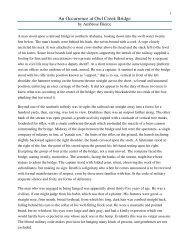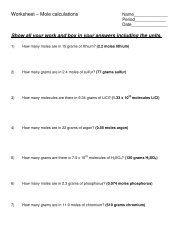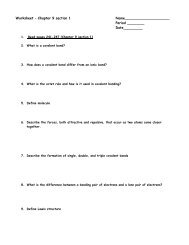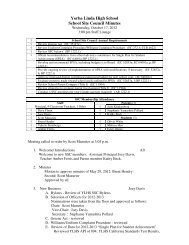Chapter 36: Resource Acquisition and Transport in Vascular Plants
Chapter 36: Resource Acquisition and Transport in Vascular Plants
Chapter 36: Resource Acquisition and Transport in Vascular Plants
- No tags were found...
You also want an ePaper? Increase the reach of your titles
YUMPU automatically turns print PDFs into web optimized ePapers that Google loves.
AP Biology Read<strong>in</strong>g GuideFred <strong>and</strong> Theresa Holtzclaw<strong>Chapter</strong> <strong>36</strong>: <strong>Resource</strong> <strong>Acquisition</strong> & <strong>Transport</strong> <strong>in</strong> <strong>Vascular</strong> <strong>Plants</strong>Concept <strong>36</strong>.4 Stomata help regulate the rate of transpiration33. Leaves generally have large surface areas <strong>and</strong> high surface-to-volume ratios. Give an advantage<strong>and</strong> disadvantage of these traits.advantagedisadvantage34. <strong>Plants</strong> lose 95% of their water through stomata! What controls the amount of water loss?35. On the sketches, label the guard cell, stomata, K + , <strong>and</strong> H 2 O. Expla<strong>in</strong> why the stoma openswhen K + accumulates <strong>in</strong> the guard cells.<strong>36</strong>. Three types of stimuli can cause guard cells to open. Name <strong>and</strong> expla<strong>in</strong> how each one works.Stimulus for Stomatal Open<strong>in</strong>g <strong>and</strong>ExplanationClos<strong>in</strong>gCopyright © 2010 Pearson Education, Inc. - 7 -


